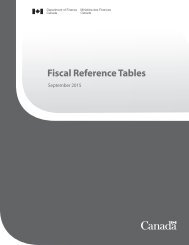China’s National Emissions Trading System
Chinas_National_ETS_Implications_for_Carbon_Markets_and_Trade_ICTSD_March2016_Jeff_Swartz
Chinas_National_ETS_Implications_for_Carbon_Markets_and_Trade_ICTSD_March2016_Jeff_Swartz
You also want an ePaper? Increase the reach of your titles
YUMPU automatically turns print PDFs into web optimized ePapers that Google loves.
Global Economic Policy and Institutions<br />
21<br />
5.2 Implications for Countries without<br />
Carbon Markets<br />
<strong>China’s</strong> advancements in emissions trading have<br />
already caught the attention of other major<br />
and emerging economies to look at developing<br />
cap-and-trade systems. It is quite evident that<br />
<strong>China’s</strong> move towards imposing a carbon capand-trade<br />
system will send a strong signal to<br />
other large economies that carbon pricing is no<br />
longer just an OECD-led policy construct.<br />
Until March 2014, Russia considered developing<br />
an ETS pilot, based on <strong>China’s</strong> approach of<br />
smaller regional ETS pilots. Vietnam has<br />
announced that it will launch a pilot ETS after<br />
2020 47 , and both Indonesia and Thailand set<br />
up voluntary carbon markets in 2014. Taiwan<br />
passed the Greenhouse Gas Reduction and<br />
Management Act in June 2015 which has set<br />
in place a process to establish an ETS. Brazil<br />
and India have, however, been silent on the<br />
topic so far. As more and more countries are<br />
exploring the introduction of ETSs, the risks of<br />
carbon leakage and competitiveness distortions<br />
amongst <strong>China’s</strong> major industries could be<br />
reduced. Below are a few examples of how the<br />
implications of <strong>China’s</strong> national ETS may be felt<br />
in non-capped major economies:<br />
Implications of <strong>China’s</strong> ETS for Japan:<br />
Japan currently has no national ETS, although the<br />
city of Tokyo has a cap-and-trade programme and<br />
the region of Saitama also maintains a voluntary<br />
carbon market programme. Japan launched<br />
the “Japan Crediting Mechanism” (JCM) in 2012<br />
to help promote low-carbon technology and<br />
services between Japan and other countries. The<br />
emissions reductions gained from such activities<br />
will help Japan achieve its emission reduction<br />
target of 3.8 percent below 2005 industrial<br />
levels by 2020. 48 The JCM is not a carbon market<br />
yet, as it does not have a tradable and issued<br />
unit. Japan does have a carbon tax in place for<br />
hydrocarbons, which is in the amount of ¥1370<br />
to 2800 (US$12 to 25). 49 With both South Korea<br />
and China having a carbon market in place by<br />
2020, there is tremendous political pressure<br />
on Japan to enact a policy to impose a carbon<br />
price across its economy.<br />
Implications of <strong>China’s</strong> ETS for India:<br />
India has no form of carbon market, although<br />
it does have a unique policy called “Perform<br />
Achieve and Trade” (PAT), which rewards Indian<br />
firms which reduce their energy intensity. It also<br />
has a renewable energy credit (REC) market. 50<br />
Indian academics and policymakers have long<br />
argued that developed countries must address<br />
and finance solutions to reduce emissions. As<br />
such, India has not yet taken any concrete steps<br />
towards putting a price on carbon. The launch<br />
of <strong>China’s</strong> national ETS, however, will pose a<br />
challenge to that argument as it will be the<br />
first real-world case of a developing country<br />
applying a carbon price across its economy.<br />
This will undoubtedly raise questions amongst<br />
India’s political and economic establishment<br />
and could lead to discussions to introduce pilot<br />
emissions trading schemes as China has already<br />
done. Indian firms will likely want to know<br />
exactly how <strong>China’s</strong> manufacturing hubs are<br />
faring under a carbon price and which carbon<br />
price in China would lead to the “breakeven”<br />
point for a Chinese firm.<br />
Implications of <strong>China’s</strong> ETS for Russia:<br />
Once a national ETS in China is in full operation,<br />
Russia’s top two trading partners (the EU and<br />
China) will both apply a carbon price across<br />
their economies. The risk of BCAs is already an<br />
issue that some Russian export conglomerates<br />
and firms are aware of, and once <strong>China’s</strong> ETS is<br />
operational, pressure to adopt a carbon price<br />
amongst Russia’s trade-exposed industries<br />
will emerge. Whilst there is very little current<br />
discussion in Russia on developing a domestic<br />
carbon market, its trade exposed industries<br />
may raise concerns with their government once<br />
<strong>China’s</strong> ETS is operational. This is especially<br />
true if one takes into account the massive<br />
natural gas volumes which Russia is set to<br />
export to China in the coming years. 51<br />
Implications of <strong>China’s</strong> ETS for Brazil:<br />
While the states of Rio and Sao Paulo made<br />
early steps to establish a voluntary carbon<br />
market 52 , to date the Brazilian federal<br />
government has made very few steps towards







